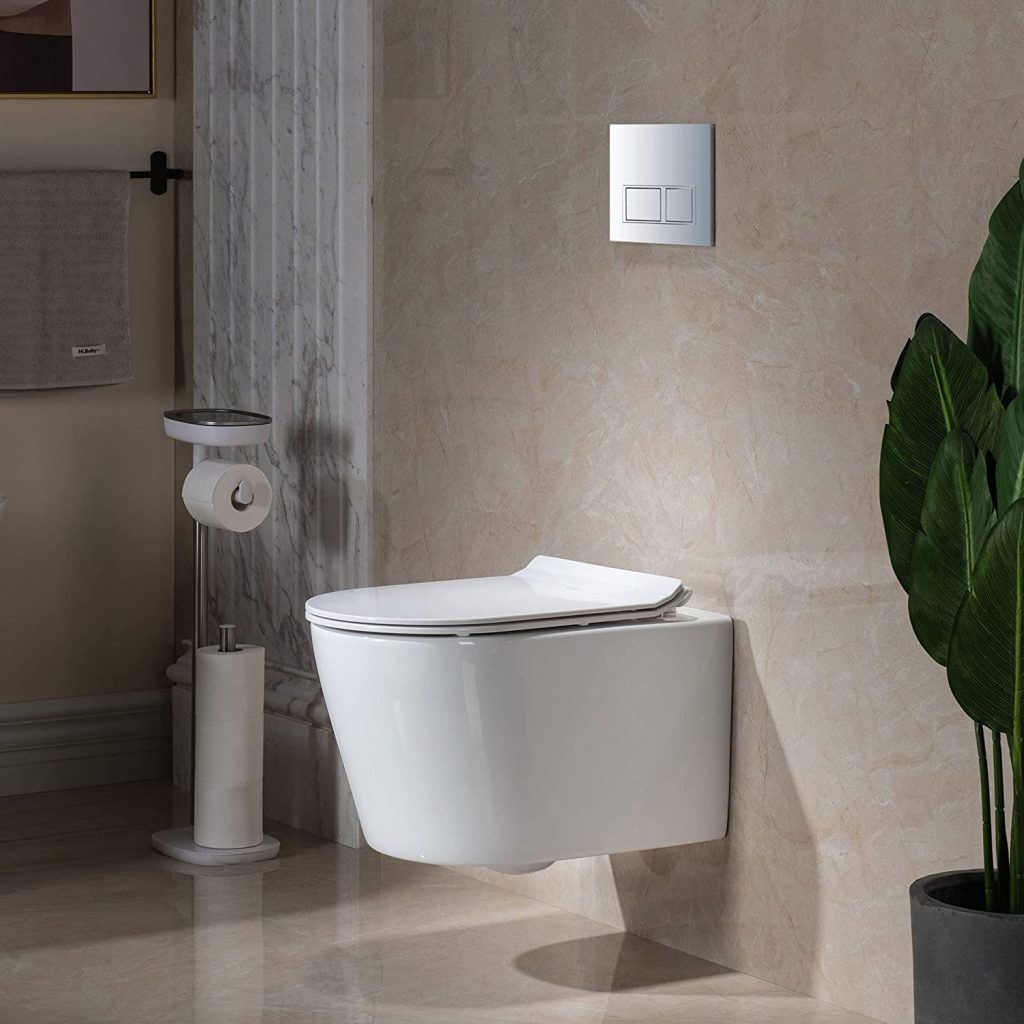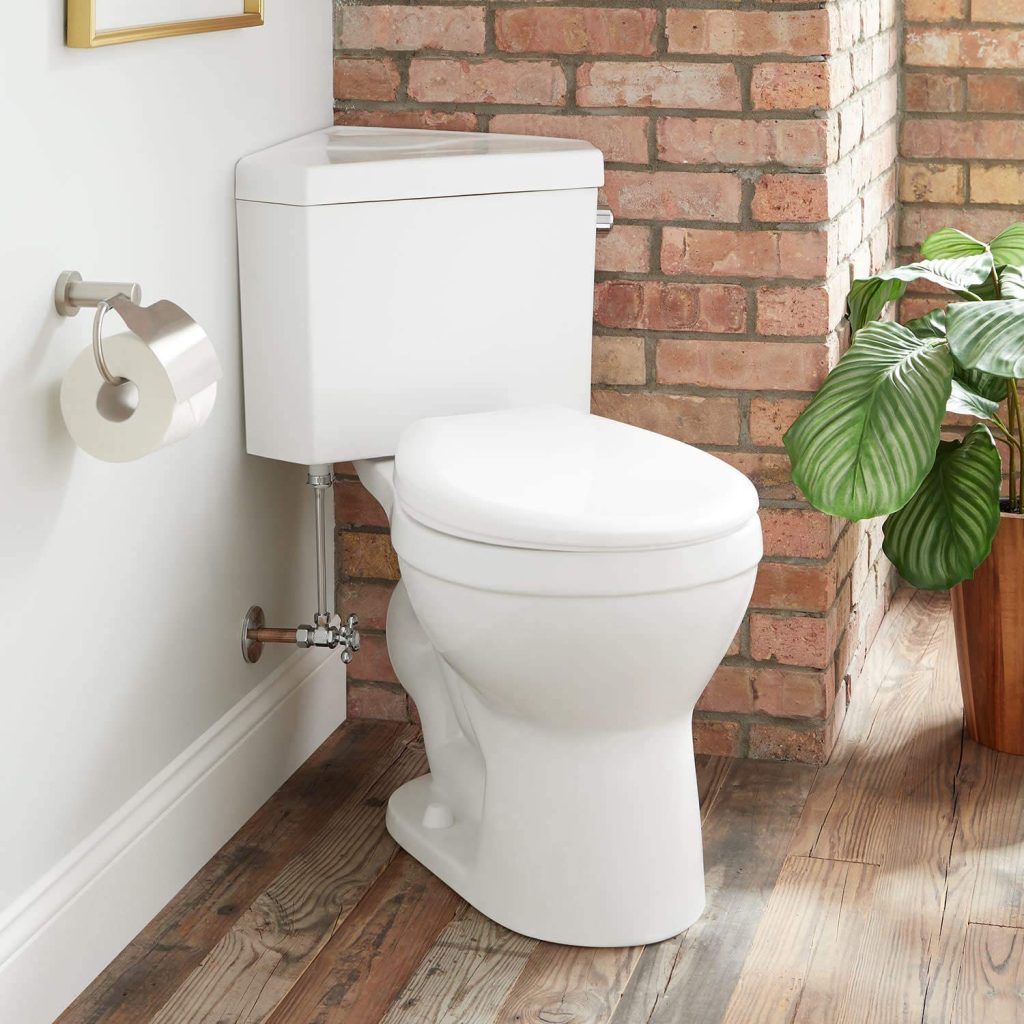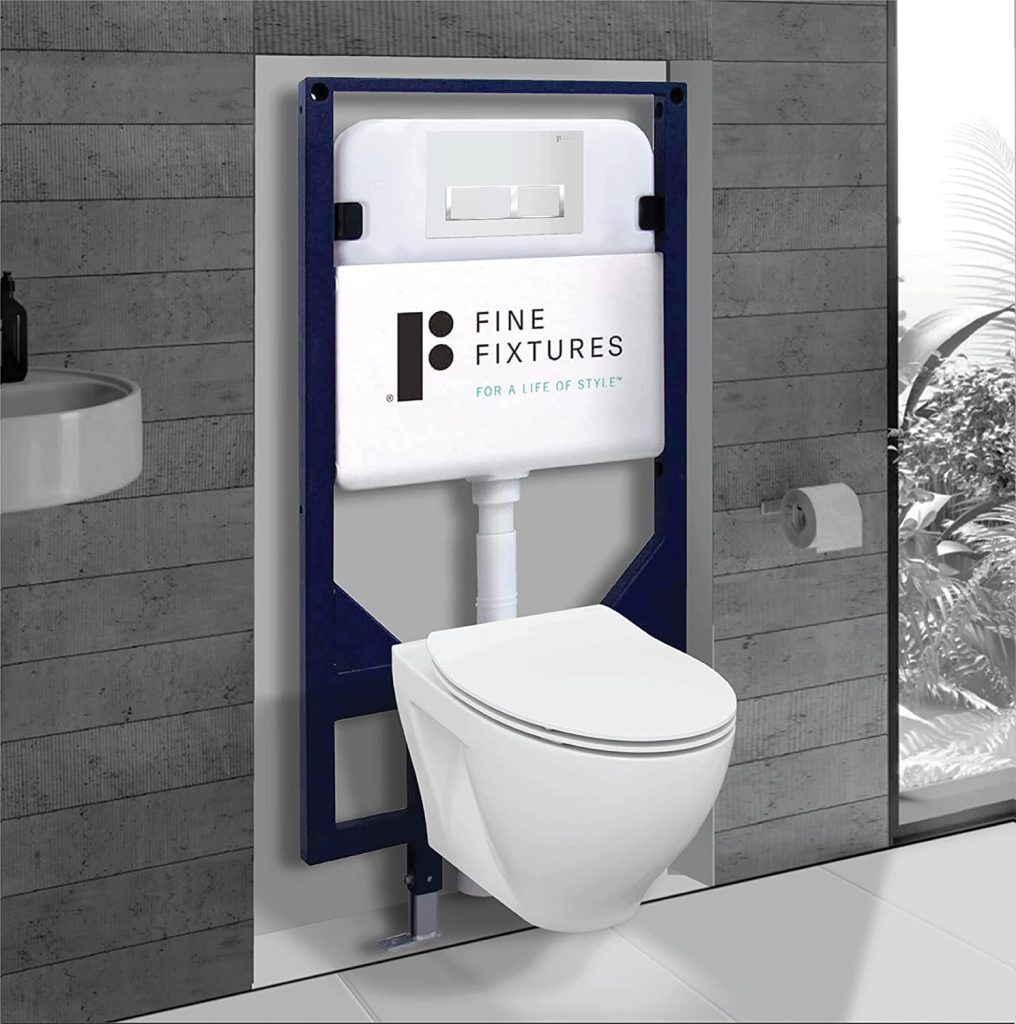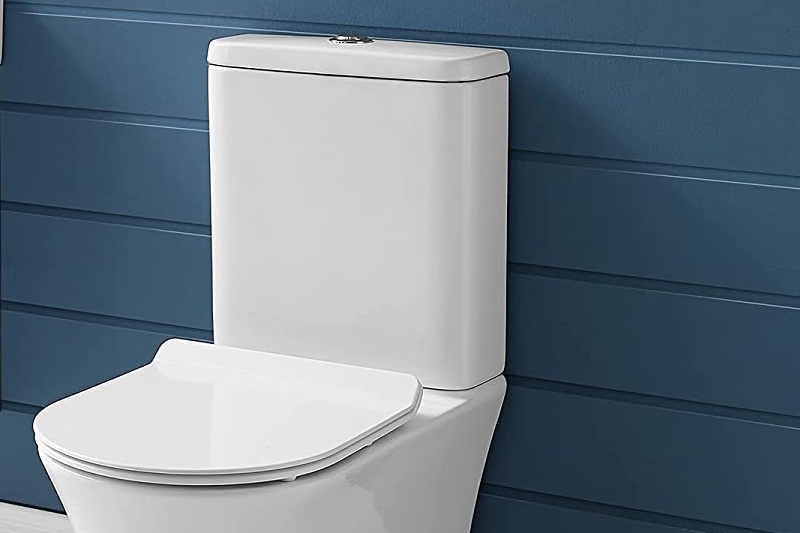We’re an affiliate
We hope you love the products featured in our articles. Just so you know, we may collect a share of sales or other compensation from the links on this page. Thank you if you use our links, we really appreciate it!
One of the most common questions that people have when remodeling their bathroom is whether or not a toilet tank should touch the wall.
Depending on where you measure from and how much space there is, you can get creative in making the distance between your toilet tank and wall as close or far apart as you would like.
Generally speaking, what’s known as ‘rough-in’ measurement will determine how much space is available in between your toilet tank and its neighbouring walls.
Simply measure the rough-in. Too short and you’ll have an extra bit of space – too large and it could be snug against the wall.
In this article, we’ll look at why this question comes up so often and discuss some of the benefits and drawbacks associated with a toilet tank touching a wall.
What is the purpose of a toilet tank?
A toilet tank is the water storage device located at the top of the bowl. Its purpose is to collect and store clean water that is then used for flushing purposes.
The tank also houses certain components, such as fill valves and shut-off valves, which are necessary for proper operation of a toilet.
So, when considering whether or not a toilet tank should touch the wall, it is important to take into account these components and their functions.
What are the benefits and drawbacks of having a toilet tank touch the wall?
Having a toilet tank touch the wall can be beneficial as it reduces the amount of space required for installation. This allows you to save on precious floor space and create a more efficient and compact bathroom layout.

However, there are some drawbacks to having a toilet tank touching the wall. For one, this arrangement leaves very little room for cleaning and servicing, making it difficult to access specific components. Additionally, the wall can become damp and even damaged in time if the water is unable to evaporate properly.
Benefits
- Saves on precious floor space
- Improves the overall aesthetics of the bathroom
- Creates an efficient and compact design
Drawbacks
- Can make cleaning and servicing difficult
- Can cause dampness or damage to wall if water can’t evaporate properly
Ultimately, it is up to you to decide if having a toilet tank touch the wall is right for you and your bathroom. Consider all the benefits and drawbacks before making your final decision.
You should also consult an experienced plumber for advice on what will work best for your space. If done correctly, having a toilet tank touching the wall is not only practical but also aesthetically pleasing.
How to adjust your toilet tank so that it doesn’t touch the wall?
If you decide that having a toilet tank touch the wall isn’t right for your bathroom, there are several ways to adjust it so that it doesn’t.
The first is to use a different type of toilet tank mounting system. This allows you to set the tank further away from the wall, creating more space.
Another option is to buy a longer flush valve assembly. This would also give you extra room for the tank and create more distance between them.
Finally, you could use spacers or foam insulation to raise the toilet tank off the wall and create a gap.
No matter what you decide, be sure to consult a professional plumber if you need assistance. They can ensure that your toilet is installed correctly and safely.
What to do if you can’t adjust your toilet tank?
If you find that adjusting your toilet tank isn’t an option for you, there are still some things you can do to protect the wall from damage.
Rubber Gasket
First, consider using a rubber gasket between the back of the toilet tank and the wall. This will help prevent water from seeping through and damaging the wall.
Sealant
You can also use a waterproof sealant or caulk to fill any gaps between the tank and wall. This will help keep water out of those areas and reduce the risk of damage.
Repair Wear & Tear
Finally, be sure to keep an eye on your toilet tank for signs of wear and tear. If you notice any cracks or other issues, have them repaired as soon as possible. This will help ensure that your toilet continues to operate properly and safely.
Taking proactive steps to protect your walls from water damage is always a good idea. Doing so can help prevent costly repairs down the line and keep your bathroom looking great for years to come.
Alternatives to keeping your toilet tank from touching the wall?
If you still don’t want your toilet tank to touch the wall, there are a few alternatives you could consider.
Corner Toilet
One option is to install a corner toilet. These toilets have a modified design that makes them perfect for bathrooms with limited space or awkward angles.

Additionally, they provide an excellent way to avoid having a tank touch the wall.
Hidden Tank Toilet
Finally, you could opt for a hidden tank toilet. With this type of toilet, the tank is concealed in the wall cavity behind the bowl.

This allows you to avoid having any contact between them and keep your bathroom looking neat and tidy.
Final Thoughts
Having a toilet tank touching the wall can be a practical and aesthetically pleasing option for the bathroom. However, it is important to consider all of the benefits and drawbacks before making your decision.
If you decide this isn’t right for your space, there are several ways to adjust it including using a different type of mounting system or buying a longer flush valve assembly. You may also need to use rubber gaskets, sealants, or foam insulation to create a gap between the tank and wall in order to prevent water damage.
When it comes to alternatives for avoiding contact between your toilet tank and wall, there are several options available. Corner toilets offer an excellent way to save space and achieve a polished look.
Hidden tank toilets are another great option for concealing the tank and keeping your bathroom looking neat and tidy. No matter what you decide, be sure to consult a professional plumber if you need assistance with the installation or repairs of your toilet.


















Related Articles
How To Fix A Low Water Level In Your Toilet Bowl?
How To Easily Remove A Bemis Toilet Seat?
Toilet Fills Up With Water Then Drains Slowly?